Six months after releasing a major report on managing and protecting old-growth forests, British Columbia is either at a turning point, a standstill or both, depending who you ask.
Katrine Conroy, the minister responsible, says change is underway but takes time. Environmentalists give the progress so far a failing grade.
One of the report’s authors, Garry Merkel, captures the uncertainty when asked if there has been noticeable change. “‘Yes’ is the short answer, but ‘no,’ depending how you look at it.”
Merkel is a professional forester with 45 years of experience and a Tahltan Nation member. He and Al Gorley, a professional forester whose similarly wide experience includes a stint as chair of the B.C. Forest Practices Board, wrote A New Future For Old Forests: A Strategic Review of How British Columbia Manages for Old Forests Within its Ancient Ecosystems.
In the report they made 14 recommendations that would totally overhaul the management of old-growth forests, starting with grounding the system in a government-to-government framework involving both the provincial and Indigenous governments.
Their second recommendation was to “prioritize ecosystem health and resilience” so that the health of forests comes first. It would mean a shift from seeing forests primarily through a financial lens where ecosystem health is viewed as a “constraint.”
Building on that base, other recommendations included protecting more old forests, improving the information available to the public about forest conditions and trends, and planning for an orderly transition of the industry away from a reliance on old growth.
They submitted the report to the government nearly a year ago, and it was released to the public in September.
Since then, the government has repeatedly said it’s committed to implementing the report’s recommendations and immediately deferred logging in some areas, though there’s disagreement about exactly how much threatened old growth those areas include and how much they leave unprotected.
The NDP won re-election last October with a platform that included promising to implement the recommendations and protect more old growth.
After the election, Premier John Horgan’s mandate letter to Conroy, the new minister of forests, lands, natural resource operations and rural development, instructed her to work towards protecting “more” old growth, without specifying how much, where or when.
Torrance Coste, national campaign director with the Wilderness Committee environmental advocacy group, says it’s positive that the government has committed to implementing the report’s recommendations and protecting old growth.
But while the government delays implementation, plans to log in sensitive areas like the Fairy Creek watershed near Port Renfrew on Vancouver Island continue, he said. Teal Jones was in court this week seeking an injunction to remove blockades and prevent people from interfering with logging. The hearing will resume March 25.
“Nothing’s different on the ground,” Coste said. “It’s exactly the old ‘talk and log.’”
The Wilderness Committee and two other groups, Sierra Club BC and the Ancient Forest Alliance, today released an “old-growth report card” that considered the Horgan government’s performance in five areas.
They give a "D" for the logging deferrals the government introduced last fall, saying they include only about 3,800 hectares of at-risk old growth, less than one per cent of what’s threatened in the province. They want the government to immediately defer logging of all at-risk old growth.
Conroy said of the 353,000 hectares where logging was deferred, about 196,000 hectares are old growth. “You can’t protect an old-growth tree by itself. You have to protect the area around it.”
The environmental groups gave the government "F"s on the four other areas they looked at. There needs to be a three-year work plan with milestone dates, they said. And so far, there’s no funding to implement the transition of the industry from dependence on old growth, including the report’s recommendation for “Indigenous-led long-term conservation solutions and economic alternatives to old-growth logging.”
Nor has the government followed through on the need for legislation that will give decision-makers like the chief forester and district managers the legal authority to implement the major shift to prioritizing ecosystem integrity and biodiversity.
Finally, the government hasn’t done anything to improve transparency and communication, they said. The launch of the old-growth report was itself an example of “inaccurate and misleading” communication, they said, with claims that 353,000 hectares of old growth had been protected “when much of this area is not old growth and much of it is forest that is already protected.”
Meanwhile little seems to have changed in how the forests are managed, Coste said. If First Nations want to conserve forests in their territories, there are significant barriers. But the doors are wide open if they want to log them. The status quo remains as the government and industry consult First Nations with a goal of facilitating logging, he said.
When the default position remains to continue logging while discussions continue, Coste added, “that’s not a paradigm shift.”
The government is saying many of the right things, but “we’re worried about the urgency,” he said.
BC Green Party Leader Sonia Furstenau criticized the lack of progress during question period at the legislature today.
“One of the key recommendations is to immediately defer logging of the most at-risk old growth to prevent loss of rare ecosystems,” she said, referring to the old-growth strategy report. “The report specified that this must happen within six months. Here we are, and this government still has not taken any meaningful action to protect these forests. Instead, we’re losing critical old-growth stands, as the old strategy of talk and log continues.”
Forests Minister Conroy responded by saying B.C. has long had a “divisive and patchwork” approach to managing old-growth forests. “Those who are calling for a return to the status quo are putting B.C.’s majestic old growth and vital biodiversity at risk, and those who are calling for an immediate moratorium are ignoring the needs of thousands of workers and families in forest-dependent communities right across our province,” she said.
“Our government is dedicated to implementing the recommendations to ensure new, holistic approaches to how we manage B.C.’s old-growth forests.”
Speaking to The Tyee earlier in the week, Conroy said the government is committed to implementing Merkel and Gorley’s recommendations and is working towards that.
There have been delays due to the COVID-19 pandemic, she allowed, but work continues steadily at the staff level, there are government-to-government discussions happening with First Nations and the timelines set out in the report were never meant to be deadlines.
“The timeline wasn’t a hard timeline,” Conroy said. “I know there’s a lot more work to do when we’re protecting old growth, but we have to do it in a comprehensive way across the province. We can’t rush this. We have to do it properly.”

People on all sides, including the industry, acknowledge there needs to be change, she said. The government’s focus is on bringing everyone to the table to develop a provincewide strategy that will help avoid the valley-by-valley conflicts to which the province is prone.
Conroy said she had to be careful what she says about the highest profile of those conflicts, Fairy Creek, while it’s before the courts. “I respect people’s right to peacefully protest and hopefully there’s going to be a safe resolution to it.”
Conroy also noted that some 2,000 hectares in the Fairy Creek area are already protected, including in an old-growth management area and a wildlife habitat area to protect endangered marbled murrelets, a seabird that nests there.
People opposed to logging in the watershed say there’s so little forest like it left that the whole area should be protected.
“From my perspective, I think of it as a generational issue,” Conroy said, mentioning her nine grandchildren. When they are adults, they should have the option to work in a sustainable, well-managed forest industry if they choose, but also the ability to go for a hike in an intact forest.
In December, Horgan told The Tyee implementing the recommendations from Gorley and Merkel’s report requires engaging with workers, companies that have tenure and, most importantly, Indigenous peoples who have rights and title.
“There are many Indigenous communities that very much want to protect and preserve their territory, but there are also many, many who want to do sustainable forestry,” he said. “We need to make sure we’re finding that balance, and those discussions don’t happen overnight, and they involve multiple stakeholders.”
Report co-author Merkel said that while it’s important to keep the government’s feet to the fire, the move he and Gorley have recommended involves a complete change of culture and that will take time.
It includes two major transitions, he said, one in the move to government-to-government relationships with First Nations and one in giving priority to ecosystem health in land management decisions.
“When you’re moving on a shift that’s big, it’s hard to have a sense of momentum,” he said.
He compared the change to a person moving to a country that’s completely foreign to them and trying to adapt. “Maybe you could as a person, if you had to, but when you’ve got a whole society and they depend on what you’re changing, it doesn’t happen that fast. It just doesn’t.”
On top of that, he said, he and Gorley hadn’t properly accounted for the delaying effects of implementing the Declaration on the Rights of Indigenous Peoples Act or the COVID-19 pandemic, he said.
“Right now, it’s an implementation challenge,” he said. “I empathize with government because they’re going through massive changes and dealing with COVID at the same time.”
There is appetite for change, Merkel said, adding both he and Gorley were pleasantly surprised by how much consensus they found that the shift is needed and that it needs to be on a big scale. “I see a real strong movement right now to figure out this whole transition.”
The Union of BC Indian Chiefs passed a resolution in September calling on the government to implement the recommendations.
In a February press release, Grand Chief Stewart Phillip said the majority of old-growth forests that are at risk remain open to logging, including vulnerable, biodiverse areas like the Fairy Creek watershed.
“What governments and corporations need to do is to take a step back and view old-growth forests not as commercialized products to be harvested and sold, but as the bedrock foundations of a healthy, biodiverse environment that First Nations have been stewards over since time immemorial,” he said.
“Old-growth forests help sustain our livelihoods and possess incalculable cultural and spiritual value that is far from pecuniary.”
Phillip called for immediate deferrals of all logging of old growth and the inclusion of First Nations in developing and implementing an old-growth protection strategy.
Also in late February, Susan Yurkovich, the president and CEO of the BC Council of Forest Industries, and Jeff Bromley, the chair of the Wood Council of Canada with the United Steelworkers union, co-wrote an opinion piece published in the Vancouver Sun that supported the government’s plans to review the province’s forest policy.
“It is also important to get this review right and ensure the result is an evidenced-based, balanced, provincewide strategy not only for old growth, but all of B.C.'s forests,” they wrote. “A strategy that ensures healthy and resilient forests, helps tackle climate change, and provides stability and predictability for First Nations, labour, industry and communities.”
Merkel said the government needs to start building measures and targets and tracking its progress at a bigger scale. It’s a matter of setting the right conditions, then starting to measure the things that need to change. “It will go there over time.”
Big changes are coming over the next couple of years, and though there will no doubt be growing pains, the results will play out over a couple of generations, he said. “You’ll see a whole different standard of care.”
Overall, he said, he believes the government is headed in the direction he and Gorley set out. Maybe a little slowly, and the change is hard to see, but “I don’t feel bad about it yet.”
Each region will have its own opportunities and challenges, said Syeta'xtn, a spokesperson for the Squamish Nation who is also known as Chris Lewis.
The Squamish Nation wants to start protecting the last remaining old-growth stands in its territory and looking at forestry differently, and is excited to be involved in those discussions and working with the provincial government and neighbouring nations, he said.
In his experience, he said, “the willingness of the provincial government to look at things differently is absolutely there.”
The Squamish Nation and the provincial government recently reached an agreement that will protect the Dakota Bowl area of Mount Elphinstone, a 71-hectare area that includes some 77 culturally-modified trees and that Lewis said is a last stand of yellow cedar that provides bear habitat.
“It’s a signal of goodwill,” he said of the agreement, adding it was 10 years in the making. “It’s a signal we want to change direction, and hopefully that’s the case.”
There are other areas though, where there have previously been impacts and it may make sense to continue logging and allowing for economic opportunities, he said.
“It’s just around that balance,” he said. “Definitely I’m optimistic about finding a balance.”
Ultimately, Lewis said, the hope is that the current goodwill and optimism can be turned into reality, with regional decisions feeding into a provincewide shift. “It’s something that’s very much generational and it’s not going to change overnight, but we have to change somewhere,” he said. ![]()
Read more: Labour + Industry, BC Politics, Environment





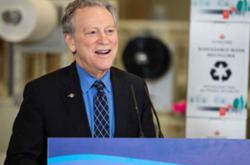

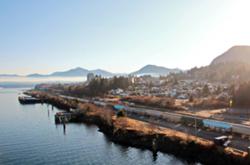

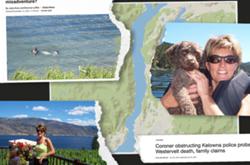
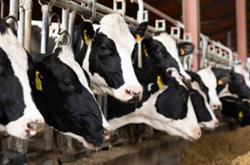


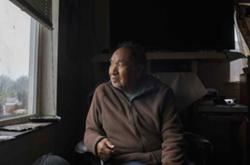


Tyee Commenting Guidelines
Comments that violate guidelines risk being deleted, and violations may result in a temporary or permanent user ban. Maintain the spirit of good conversation to stay in the discussion.
*Please note The Tyee is not a forum for spreading misinformation about COVID-19, denying its existence or minimizing its risk to public health.
Do:
Do not: